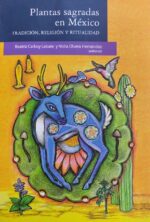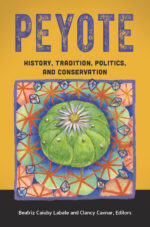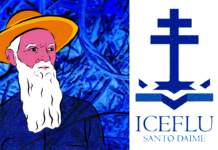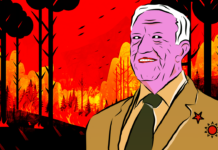The year 2021 began with heavy regret in the marijuana scene in Brazil, with the news of the death of Priest Antônio Luiz Madchioni, affectionately known as “Padre Ticão.” His strong religious and social leadership gained prominence in the Parish of São Francisco de Assis, located in Ermelino Matarazzo, in the east side of São Paulo. Since 1982, the priest had been working on defending the poorest population and seeking to reduce social inequalities, having been engaged, in recent years, in defending the use of marijuana. This vanguard positioning was motivated by a shortage envisioned in the Catholic Church in facing the needs of the present times, especially with regard to actions to improve the quality of life and dignity of the population.
In fact, the use of marijuana in Brazil was disseminated, mainly, by the enslaved.
In fact, the use of marijuana in Brazil was disseminated, mainly, by the enslaved. Its prohibition was strongly marked by racism and functioned as a persecutor of cultures, customs, and traditions that originated in Africa, arising a few decades after the abolition of slavery (1888). In this way, it was possible to continue the practices of segregation and social exclusion established in the country since colonialism. The dominant white elite was then able to perpetuate its power, maintaining hegemony over the less favored classes under the pretext of the War on Drugs.
In this case, there was a question about healing practices that did not conform to the guidelines of the emerging pharmaceutical market, which ended up establishing an authority for what would be considered as the most legitimate medicine: Western medical science
Renato Malcher-Lopes and Sidarta Ribeiro (2019) point out that, to some extent, it was common for healers to prescribe marijuana to cure various types of diseases. By the twentieth century, however, a new medical-scientific class was consolidated in Brazil, whose influences on society were decisive for the criminalization of the herb. In this case, there was a question about healing practices that did not conform to the guidelines of the emerging pharmaceutical market, which ended up establishing an authority for what would be considered as the most legitimate medicine: Western medical science (Vargas, 2008). Gradually, then, the so-called “popular medicine” was being despised, under a moralistic perspective that supported laws criminalizing the use of certain drugs in society.
Currently, however, we live in a situation that heralds the possibilities for changes in Brazilian legislation. With the advances in research on the subject, we noticed a clear increase in acceptance around the medicinal use of marijuana in light of proven results for the control of certain diseases, such as epilepsy, multiple sclerosis, Alzheimer’s disease, Parkinson’s disease, and others. With the debate still quite reserved about medical use, however, very little is said about cultural, social, adult use; not to mention religious and industrial uses.
When we talk about the medical context, we can observe an imposition of the complex legislative and regulatory structure that surrounds the theme. In this case, the rules and records regarding the use of marijuana in Brazil are determined almost entirely by ANVISA (National Health Surveillance Agency), a regulatory body that oversees the sanitary control of national and imported products. Therefore, access to the herb remains very restricted, depending on medical prescription; this demonstrates, once again, the power of the pharmaceutical industry to engineer the monopolization of health.
We will see that a more plural approach to the decriminalization of marijuana can be carried out based on “cannabis associations,” a type of regulation that integrates the different ways of using the herb.
Therefore, we emphasize the need to demystify the modalities that go beyond medical use. We will see that a more plural approach to the decriminalization of marijuana can be carried out based on “cannabis associations,” a type of regulation that integrates the different ways of using the herb. We will pay attention here to some details of its use as a religious sacrament, specifically in the Rastafarian culture and in the Santo Daime religion.
Religious Use
From the point of view of religious use, we first think of the Rastafarian culture, which is based centrally on the Bible. Despite having arisen in Jamaica, Rastafari has as its devotional figure and spiritual leader, Haile Selassie, a name received by the born Tafari Makonnen on the occasion of his coronation as Emperor of Ethiopia. Receiving influences from the movement known as “Ethiopianism,” the Afro-Jamaican founders of Rastafari understood the coronation of Selassie as a fulfillment of biblical prophecy, which gave the Ethiopian ruler the status of a true Messiah.
As for marijuana, it is believed that the herb was introduced as a sacrament in the Rastafarian culture by the contact between Indian migrants and Blacks already residing in Jamaica. This statement can be verified by the name, in Sanskrit, in which the Blacks themselves designate the plant: ganja. Its prohibition on the Caribbean island in 1913 made Afro-Jamaicans even more marginalized. Those users who did not accept the Babylon system consequently took up a position of resistance against Jamaican laws.
In this case, it is important to highlight that one of the great influences that contributed to the formation of the Santo Daime was vegetalismo, the name by which Amazonian plant healing practices are known that have as central point the use of the so-called “master plants,” “plant teachers,” or “power plants.”
Against the prohibitionist narratives that support the supposed potential of moral and social disruption caused by the use of marijuana, within the Rastafarian culture, the herb is integrated with behavioral precepts that cannot be ignored at the time of its consecration (MacRae, 2016). The same occurs in the context of its use within one of the branches of the Santo Daime religion, the ICEFLU (Church of the Eclectic Cult of the Fluent Universal Light), where it is known as “Santa Maria.” In this case, it is important to highlight that one of the great influences that contributed to the formation of the Santo Daime was vegetalismo, the name by which Amazonian plant healing practices are known that have as central point the use of the so-called “master plants,” “plant teachers,” or “power plants.” Soon, Santa Maria was recognized, of course, as another one of those power plants.
In fact, if the freedom of the sacred drink is not to be compromised, the Brazilian ayahuasca religions must comply with regulations that prohibit their association with other psychoactive substances considered illicit, such as marijuana.
It is from this point that the memory earlier referred to as “Padre Ticão” started. In the last years of his advocacy for the use of marijuana, he opened the doors of his parish to perform songs and prayers in praise of Santa Maria. This reverence for the spiritual memory of Padrinho Sebastião, the founding leader of ICEFLU, reveals the strong legal uncertainty surrounding the religious use of ayahuasca. In fact, if the freedom of the sacred drink is not to be compromised, the Brazilian ayahuasca religions must comply with regulations that prohibit their association with other psychoactive substances considered illicit, such as marijuana.
Discover Indigenous Reciprocity Iniciative of the Americas
And here is the contradiction: The ban on the use of marijuana makes Santa Maria illegal; however, if there is decriminalization, its use, together with ayahuasca, is automatically allowed. Thus, it is extremely important to bring to the debate on the legalization of marijuana the boundaries established regarding the recognition of the religious use of ayahuasca. The debate about religious use alone is not enough to give the desired scope to the theme, but it already allows us to glimpse the possibilities of building a more comprehensive regulation.
Cannabis Associations
Among the different modes of use, whether for medical, religious, or social purposes, we highlight here the periodic meetings marked by “smoking circles,” organized by what became known as “diambistas clubs,” in clear allusion to diamba, the name attributed to the herb by the Africans.
We know that, in the period prior to the development in Brazil of the War on Drugs, marijuana was already used widely among the enslaved and working class. Among the different modes of use, whether for medical, religious, or social purposes, we highlight here the periodic meetings marked by “smoking circles,” organized by what became known as “diambistas clubs,” in clear allusion to diamba, the name attributed to the herb by the Africans. Nowadays, we can observe in the marijuana decriminalization movement the growth of the so-called “cannabic associations,” something similar to the diambistas clubs of the past; however, now played mainly by the most privileged population segments.
Aiming at the realization of a trend that can reach increasing numbers of people, the associative model is capable of providing, in a responsible manner, effective control of users. Associations would have the authority, not only to define the appropriate places for the use of the herb, but also to deny the distribution of the substance to groups that are not recommended, such as minors or those who may have psychiatric disorders. For the purpose of comparison, at the international level, the framework of this regulatory model is the “Cannabis Social Clubs” of Spain, intended to grow and supply cannabis to its members in reserved social spaces, with access restricted to its members.
According to the Brazilian Commission on Drugs and Democracy (CBDD), organized in 2011, Social Clubs are cited as an example of a new practice in drug policy. For all those who intend to avoid the risks involved in contact with drug trafficking, the so-called “cannabis clubs” are a safe alternative that has been consolidating within the debate on the use of marijuana. Undoubtedly, the associative model can contemplate all the different purposes for which the herb is used, from medicinal—with a different approach from the pharmaceutical industry’s objectives—to adult, social, recreational, religious, and cultural use. Thus, groups such as Rastafari and Santo Daime can also start from this same legal basis to regulate the use of ganja and Santa Maria.
Criminalization of Marijuana: An Affront to Human Rights
The prohibition on the production, possession, and use of the herb for adult use violates the principle of the dignity and autonomy of individuals.
With this text, we have sought to highlight the need to expand the debate on the decriminalization of marijuana, going beyond its medicinal dimension, where its importance, is indeed unquestionable. The prohibition on the production, possession, and use of the herb for adult use violates the principle of the dignity and autonomy of individuals. We argue here that the exercise of fundamental freedoms must be effectively respected in regard to freedom of thought, conscience, belief, and the right to peaceful assembly. In summary, the association for the purposes of marijuana production and consumption must be safeguarded as an individual protection, designed for the effective protection of the community.
People’s capacity for self-determination should be valued in such ways as to stimulate the different ways of life, ideologies, habits, and customs existing in humanity. The Brazilian history referred to here, with regard to the racist character of the criminalization of marijuana, already signals the need to free society from the prejudices still imposed on marginalized groups and less favored classes. And it should be said: There is no reason to criminalize the mere conduct of an individual, assuming a public-social damage that in fact did not materialize, especially if other fields of law—such as family law, neighborhood law, child and adolescent law, civil liability, and even criminal law itself—are able to restrain any excesses associated with the use of marijuana.
Likewise, in order for there to be greater harmony in social relations, all those people who do not sympathize with the same custom also deserve respect. In this way, it will be possible to put an end to the vicious cycle of the War on Drugs, established by concepts and values that are manifestly outdated. We support a democratic debate based on fraternal ideals in order to promote social equality and an end to the discrimination against marginalized social groups. Anyway, marijuana is a plant naturally found in nature, and this is how it is consumed, without any other chemical interference. With that we close, remembering once again the late Father Ticão: “God created nature and it is from nature that we take life and health.”
Feature Art by Trey Brasher.
References
Malcher-Lopes, R., & Ribeiro, S. (2019). Maconha, Cérebro e Saúde [Marijuana, brain and health]. São Paulo, SP: Yagé.
Vargas, E. V. (2008). Fármacos e outros objetos sócio-técnicos: notas para uma genealogia das drogas [Drugs and other socio-technical objects: Notes for a genealogy of drugs]. In B. C. Labate, S. L. Goulart, M. Fiore, E. MacRae, & H. Carneiro (Eds.), Drogas e Cultura: novas perspectivas [Drugs and culture: New perpectives] (pp. 41– 64). Salvador, BA: EDUFBA. https://doi.org/10.4000/pontourbe.1744
MacRae, E. (2016). Canabis, Racismo, Resistência Cultural e Espiritualidade [Cannabis, racism, cultural resistance and spirituality]. In E. MacRae & W. C. Alves (Eds.), Fumo de Angola: Canabis, Racismo, Resistência Cultural e Espiritualidade [Smoke of Angola: Cannabis, racism, cultural resistance and spirituality] (pp. 23–58). Salvador, BA: SciELO – EDUFBA. https://doi.org/10.7476/9788523217334
Take a minute to browse our stock:
Did you enjoy reading this article?
Please support Chacruna's work by donating to us. We are an independent organization and we offer free education and advocacy for psychedelic plant medicines. We are a team of dedicated volunteers!
Can you help Chacruna advance cultural understanding around these substances?
















